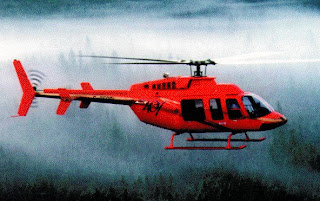
The Lockheed C-5 Galaxy is a large, military transport aircraft built by Lockheed. It was designed to provide strategic heavy airlift over intercontinental distances and to carry outsize and oversize cargo. The C-5 Galaxy has been operated by the United States Air Force since 1969 and is one of the largest military aircraft in the world.
In 1961, several aircraft companies began studying heavy jet transport designs that would replace the C-133 transport and complement C-141 Starlifters. In addition to higher overall performance, the US Army wanted a transport with a larger cargo bay than the C-141, whose interior was too small to carry a variety of their outsized equipment. These studies led to the "CX-4" design concept, but in 1962 the proposed six-engine design was rejected, because it was not viewed as a significant advance over the C-141.[2]
By late 1963, the next conceptual design was named CX-X. It was equipped with four engines, instead of six engines in the earlier CX-4 concept. The CX-X had a gross weight of 550,000 pounds (249,000 kg), a maximum payload of 180,000 pounds (81,600 kg) and a speed of Mach 0.75 (500 mph/805 km/h). The cargo compartment was 17.2 feet (5.24 m) wide by 13.5 feet (4.11 m) high and 100 feet (30.5 m) long with front and rear access doors.[2] In order to provide the required power and range with only four engines, a new engine with dramatically improved fuel efficiency would be needed.
The criteria were finalized and an official Request for Proposal was sent out in April 1964 for the "Heavy Logistics System" (CX-HLS) (previously CX-X). In May 1964, proposals for aircraft were received from Boeing, Douglas, General Dynamics, Lockheed, and Martin Marietta. Proposals for engines were received from General Electric, Curtiss-Wright Corporation, and Pratt & Whitney. After a downselect, Boeing, Douglas and Lockheed were given additional study contracts for the airframe, along with General Electric and Pratt and Whitney for the engines.
All three of the designs shared a number of features. In particular, all three placed the cockpit well above the cargo area so that in a crash the cargo would not crush the crew as it moved forward. The Boeing and Douglas designs used a "pod" on the top of the fuselage containing the cockpit, while the Lockheed design extended the cockpit line the length of the fuselage, giving it an egg-shaped cross section. All of the designs featured swept wings and front and rear cargo doors allowing simultaneous loading and unloading. Lockheed's design featured a T-tail, while the designs by Boeing and Douglas had conventional tails.[3]
In 1965, Lockheed's aircraft design and General Electric's engine design were selected for the new transport.








.jpg)












